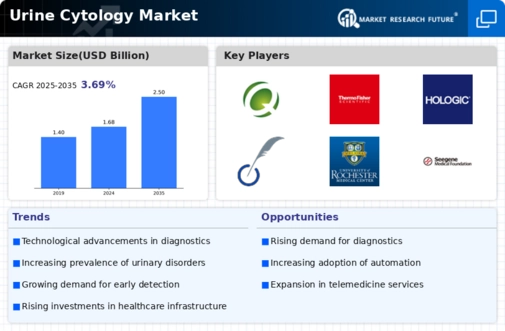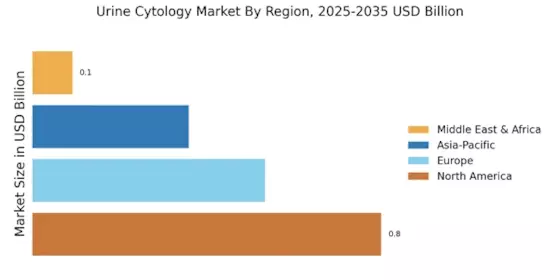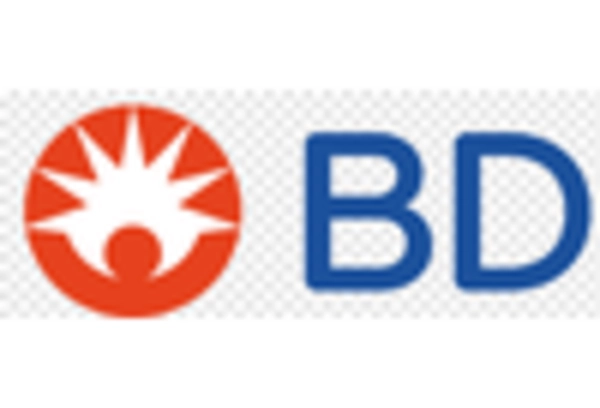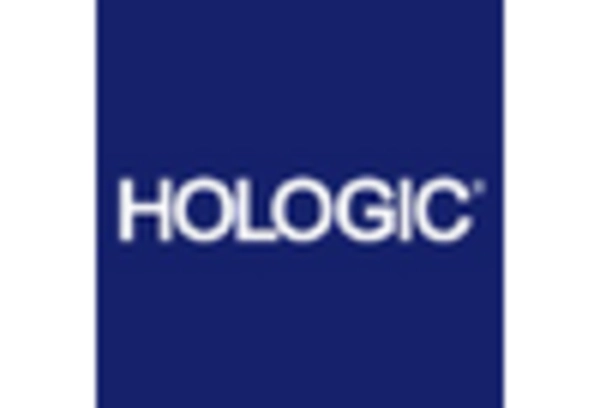Increased Focus on Preventive Healthcare
The Urine Cytology Market is benefiting from an increased focus on preventive healthcare measures. As healthcare systems worldwide shift towards preventive strategies, the demand for routine screening tests, including urine cytology, is likely to rise. This shift is driven by the recognition that early detection of diseases can significantly improve treatment outcomes and reduce healthcare costs. Moreover, public health campaigns aimed at raising awareness about urinary tract health are contributing to this trend. The integration of urine cytology into routine health check-ups may become more common, as healthcare providers emphasize the importance of early diagnosis. This growing emphasis on preventive healthcare is expected to create new opportunities for the urine cytology market, as more individuals seek out these essential diagnostic services.
Rising Incidence of Urinary Tract Cancers
The Urine Cytology Market is significantly influenced by the rising incidence of urinary tract cancers, including bladder cancer. Epidemiological studies indicate that the prevalence of these cancers is increasing, particularly in older populations. This trend is likely to drive demand for urine cytology testing, as early detection is crucial for effective treatment. According to recent data, bladder cancer is among the most common cancers, with thousands of new cases diagnosed annually. Consequently, healthcare systems are prioritizing urine cytology as a non-invasive diagnostic tool, which may lead to an increase in testing rates. The growing awareness of urinary tract cancers and the importance of early detection is expected to bolster the urine cytology market, as more patients seek diagnostic services.
Technological Innovations in Urine Cytology
The Urine Cytology Market is experiencing a surge in technological innovations that enhance diagnostic accuracy and efficiency. Advanced imaging techniques, such as digital pathology and automated cell counting, are being integrated into urine cytology practices. These innovations not only streamline workflows but also improve the sensitivity and specificity of cancer detection. For instance, the introduction of artificial intelligence algorithms in image analysis has shown promise in identifying atypical cells with greater precision. As a result, laboratories are increasingly adopting these technologies, which could potentially lead to a more accurate diagnosis of urinary tract cancers. The market for urine cytology diagnostics is projected to grow, driven by these advancements, as healthcare providers seek to improve patient outcomes through enhanced diagnostic capabilities.
Regulatory Support for Diagnostic Innovations
The Urine Cytology Market is also being shaped by regulatory support for diagnostic innovations. Regulatory bodies are increasingly recognizing the importance of advanced diagnostic tools in improving patient care. Initiatives aimed at expediting the approval process for new diagnostic technologies are likely to encourage investment in urine cytology innovations. This regulatory environment fosters the development of novel testing methods and technologies that enhance the accuracy and efficiency of urine cytology. As a result, manufacturers are more inclined to invest in research and development, leading to a broader range of diagnostic options for healthcare providers. The supportive regulatory landscape is expected to drive growth in the urine cytology market, as new products enter the market and expand the capabilities of existing diagnostic tools.
Growing Demand for Non-Invasive Diagnostic Methods
The Urine Cytology Market is witnessing a growing demand for non-invasive diagnostic methods. Patients and healthcare providers alike are increasingly favoring tests that minimize discomfort and risk associated with invasive procedures. Urine cytology, being a non-invasive technique, aligns well with this trend, offering a safe and effective means of detecting abnormalities in the urinary tract. The convenience of urine collection and the ability to perform tests in outpatient settings further enhance its appeal. As awareness of the benefits of non-invasive diagnostics spreads, the urine cytology market is likely to expand. This shift towards non-invasive methods is expected to drive innovation and investment in urine cytology technologies, ultimately improving patient access to essential diagnostic services.


















Leave a Comment